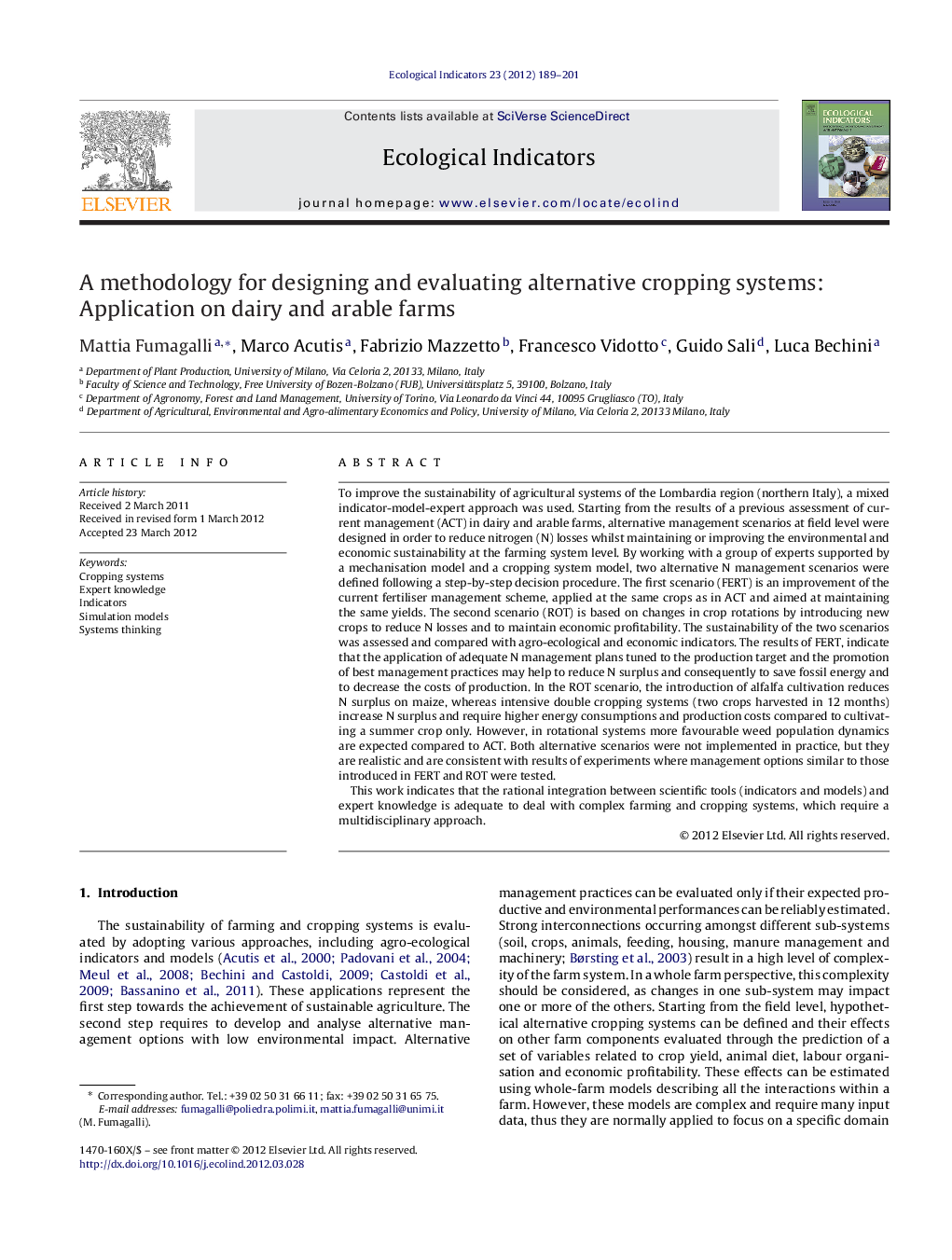| کد مقاله | کد نشریه | سال انتشار | مقاله انگلیسی | نسخه تمام متن |
|---|---|---|---|---|
| 6295555 | 1617177 | 2012 | 13 صفحه PDF | دانلود رایگان |

To improve the sustainability of agricultural systems of the Lombardia region (northern Italy), a mixed indicator-model-expert approach was used. Starting from the results of a previous assessment of current management (ACT) in dairy and arable farms, alternative management scenarios at field level were designed in order to reduce nitrogen (N) losses whilst maintaining or improving the environmental and economic sustainability at the farming system level. By working with a group of experts supported by a mechanisation model and a cropping system model, two alternative N management scenarios were defined following a step-by-step decision procedure. The first scenario (FERT) is an improvement of the current fertiliser management scheme, applied at the same crops as in ACT and aimed at maintaining the same yields. The second scenario (ROT) is based on changes in crop rotations by introducing new crops to reduce N losses and to maintain economic profitability. The sustainability of the two scenarios was assessed and compared with agro-ecological and economic indicators. The results of FERT, indicate that the application of adequate N management plans tuned to the production target and the promotion of best management practices may help to reduce N surplus and consequently to save fossil energy and to decrease the costs of production. In the ROT scenario, the introduction of alfalfa cultivation reduces N surplus on maize, whereas intensive double cropping systems (two crops harvested in 12 months) increase N surplus and require higher energy consumptions and production costs compared to cultivating a summer crop only. However, in rotational systems more favourable weed population dynamics are expected compared to ACT. Both alternative scenarios were not implemented in practice, but they are realistic and are consistent with results of experiments where management options similar to those introduced in FERT and ROT were tested.This work indicates that the rational integration between scientific tools (indicators and models) and expert knowledge is adequate to deal with complex farming and cropping systems, which require a multidisciplinary approach.
⺠We present an innovative procedure to design alternative management options for farming systems. ⺠The procedure is based on agro-ecological indicators, simulation models and expert knowledge. ⺠Adequate N management plans may improve economic profitability and N and energy use. ⺠Changing rotations may increase energy and economic costs and improves weed control.
Journal: Ecological Indicators - Volume 23, December 2012, Pages 189-201